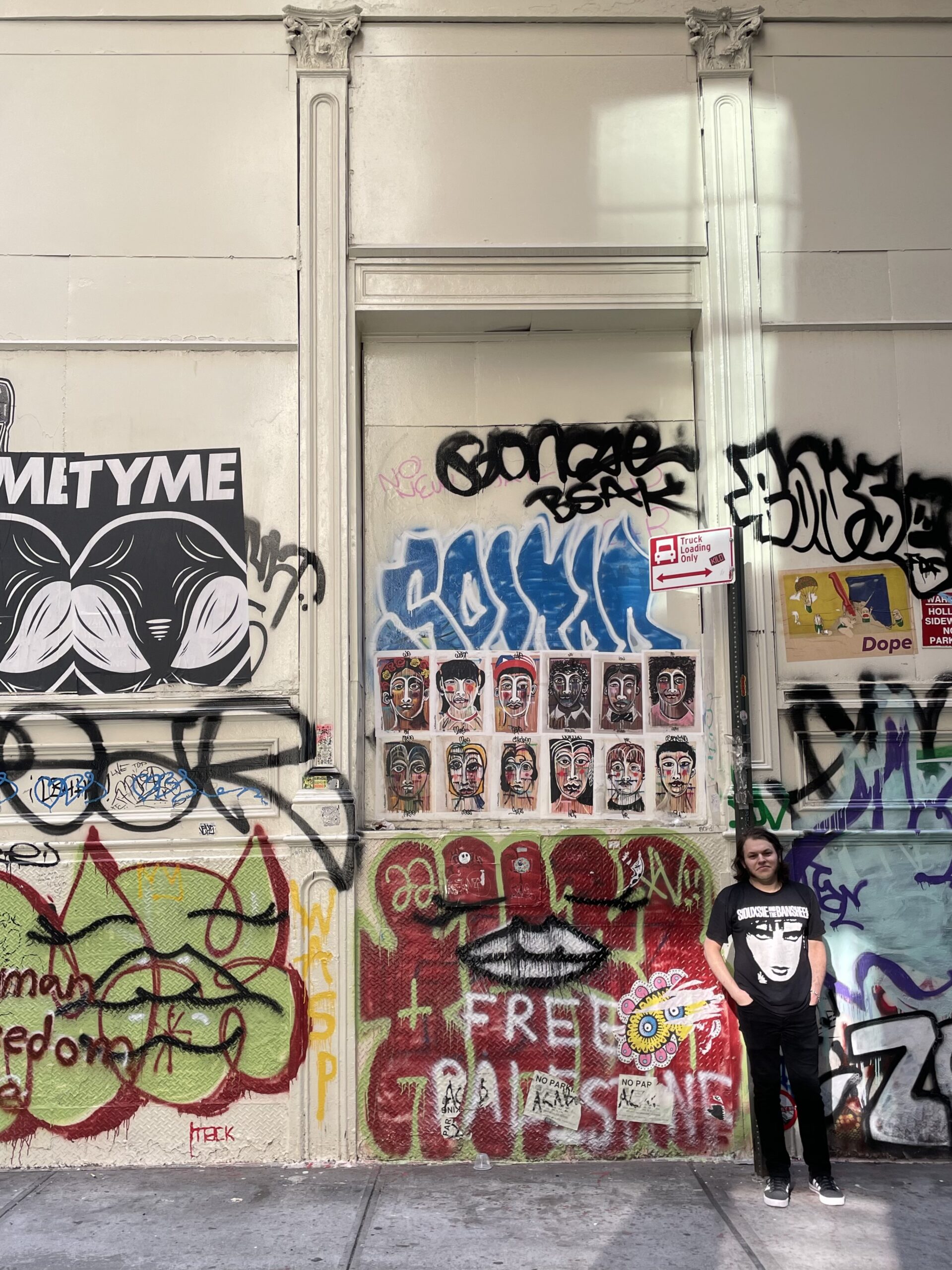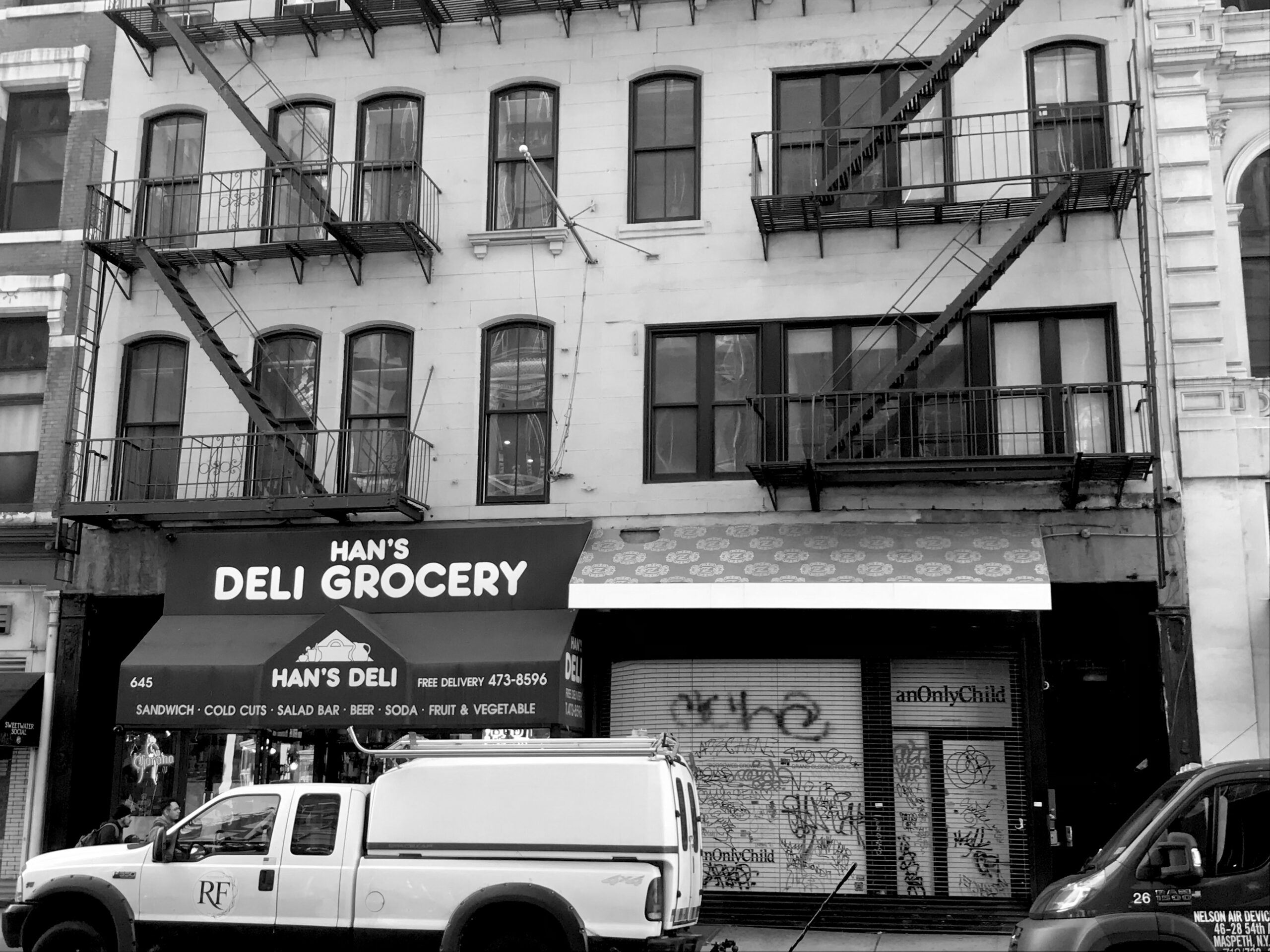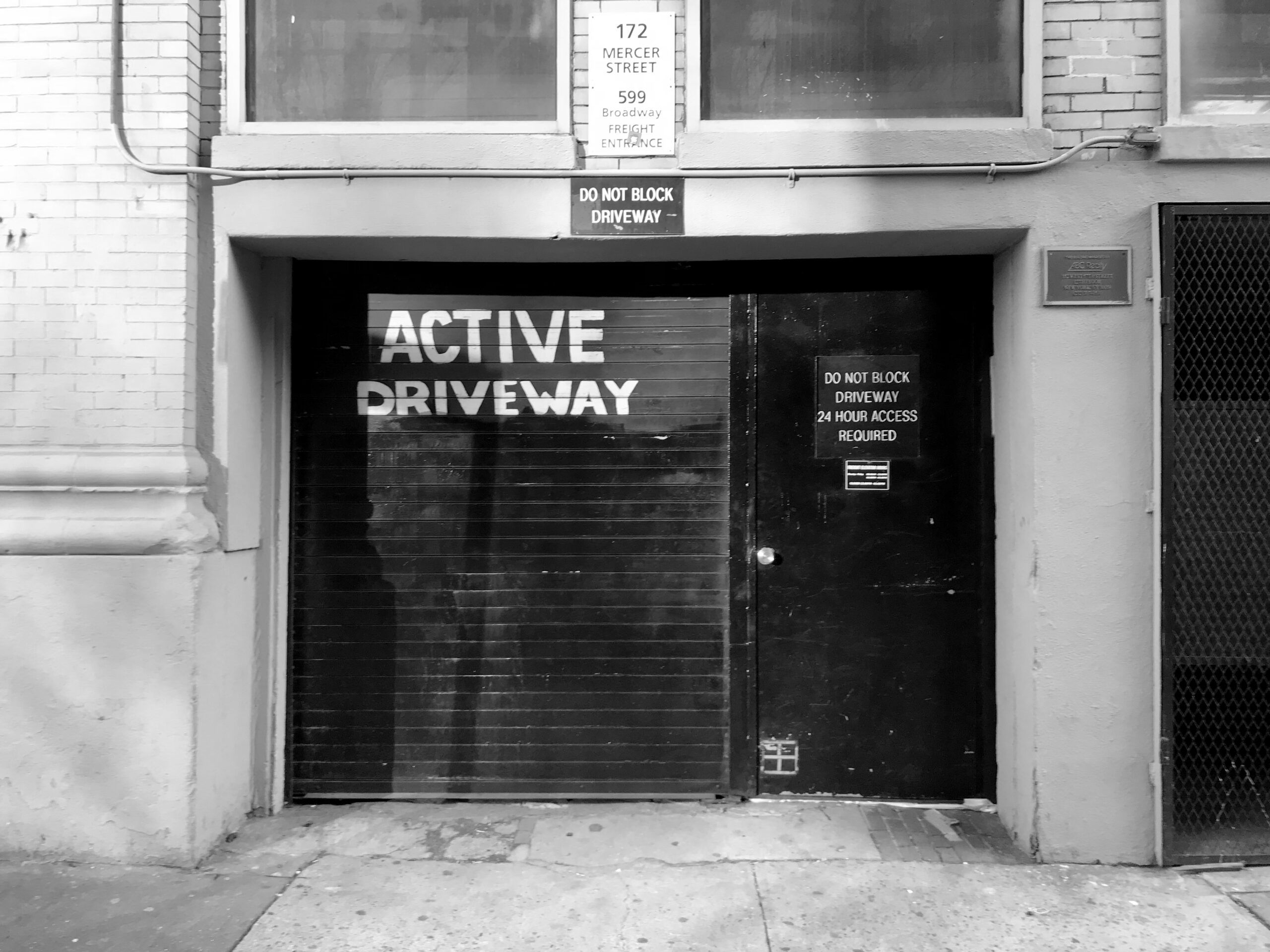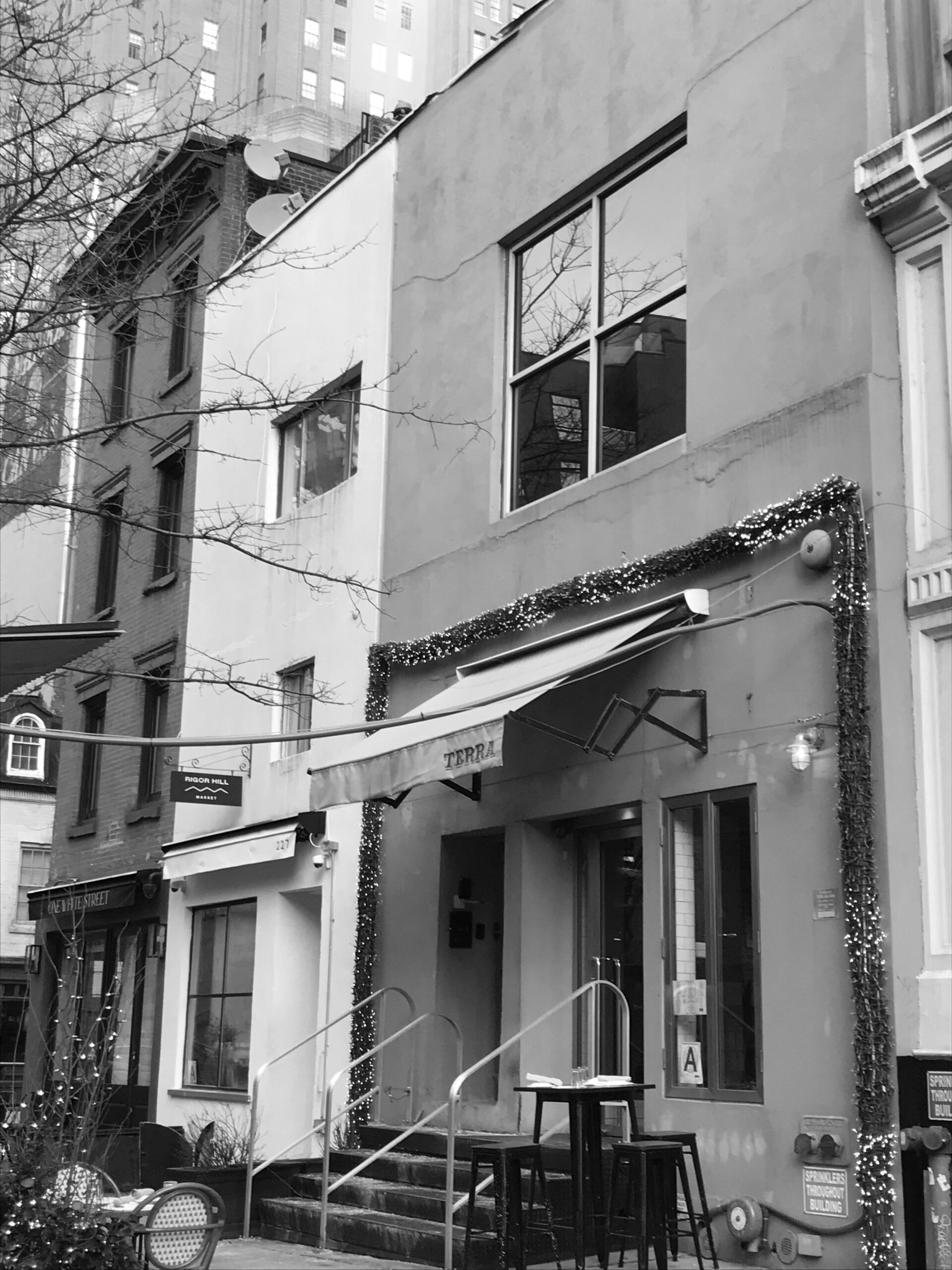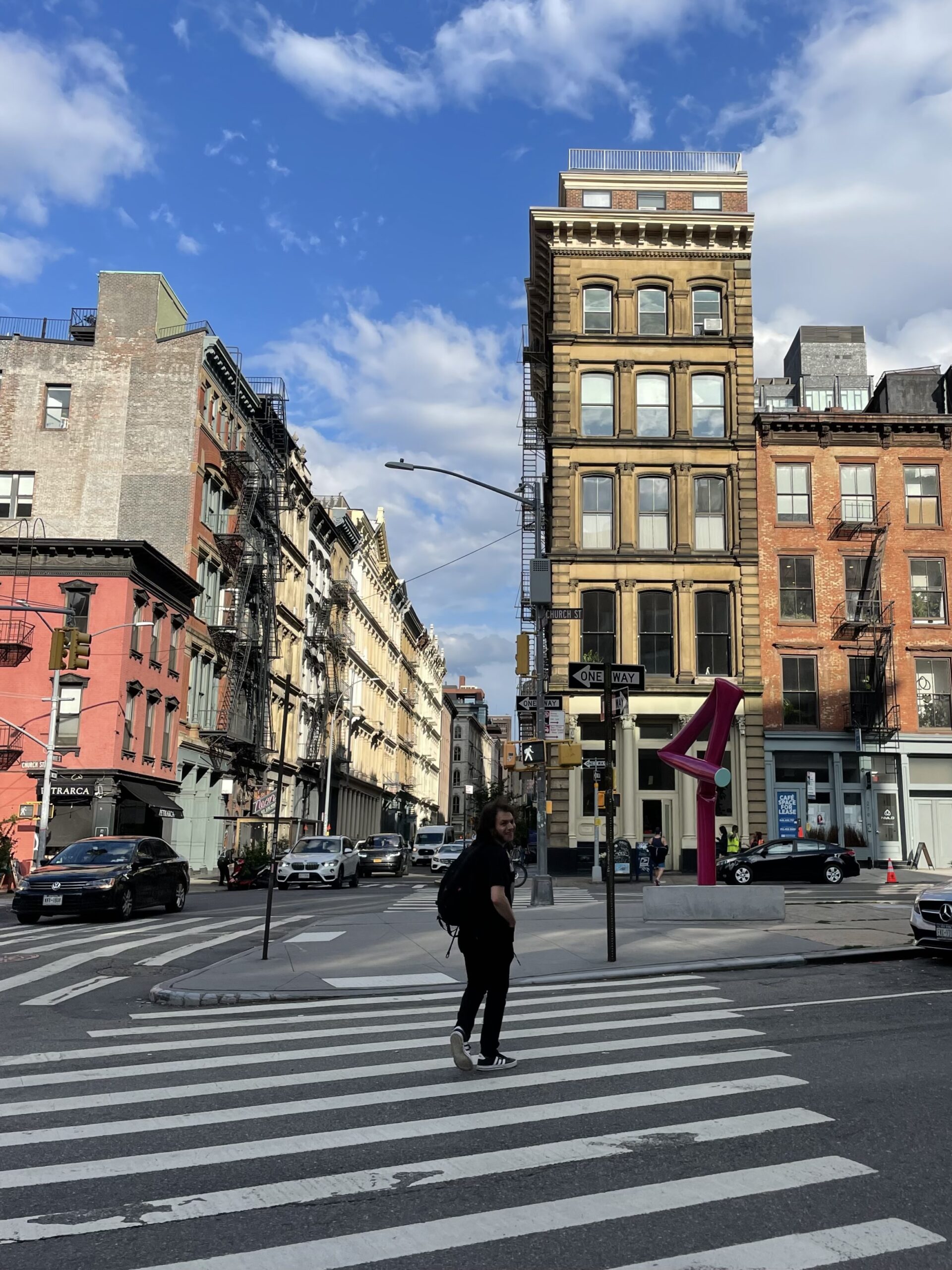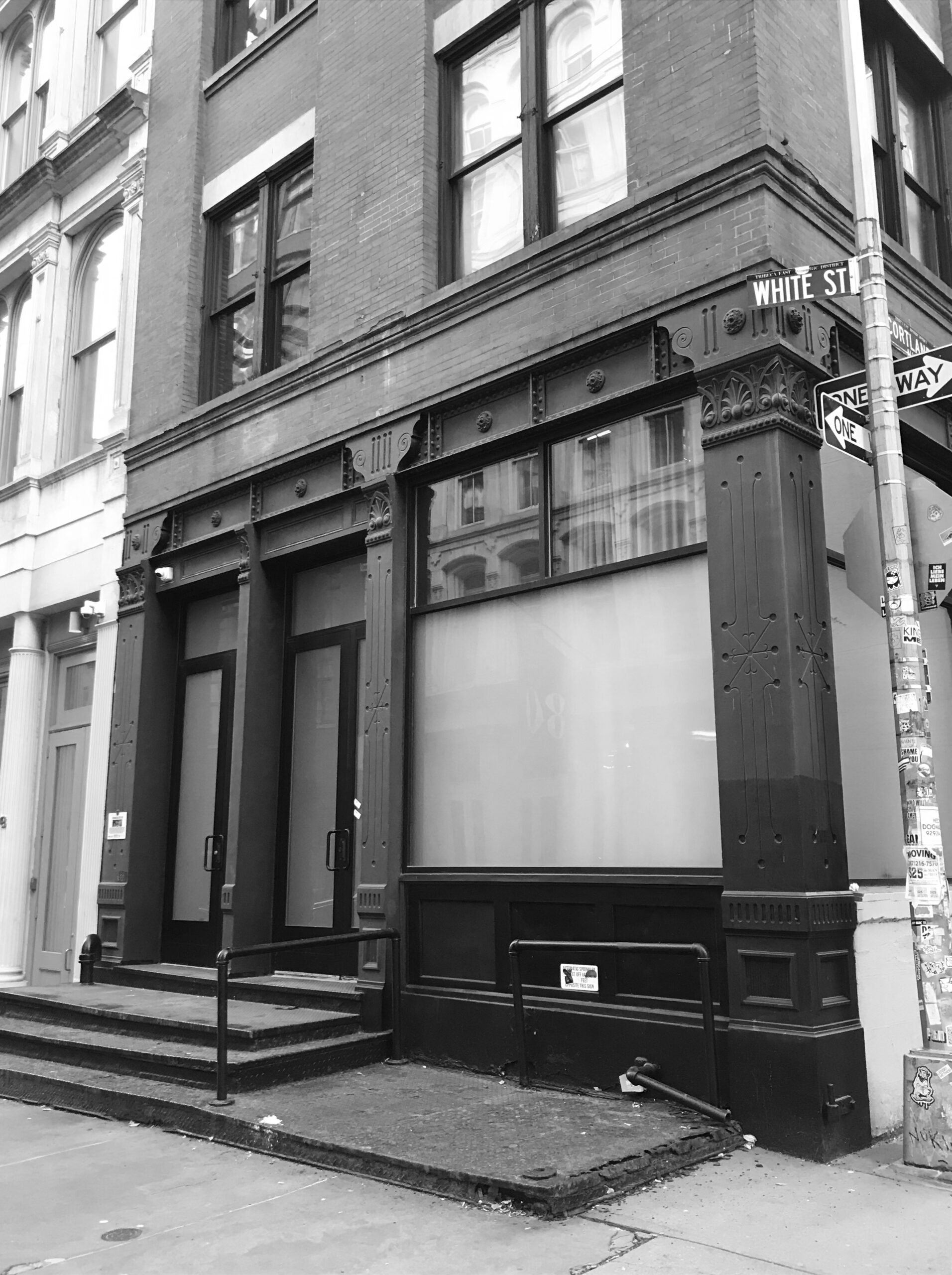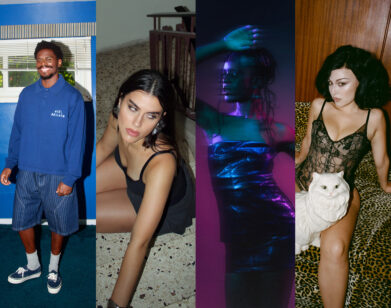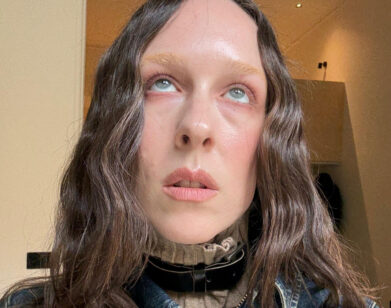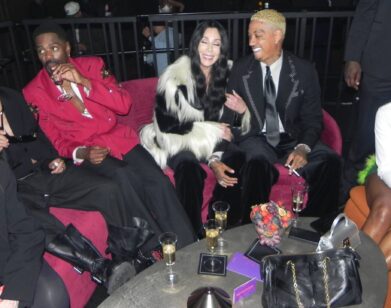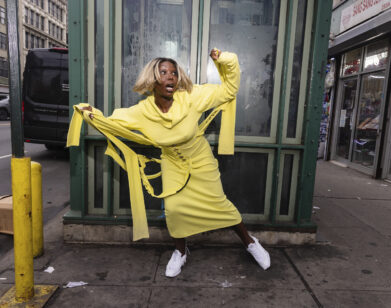ORIGINS
Jesse Rifkin Shows Us the Dance Floors Where Punk and Disco Blossomed
It’s late afternoon in early summer when I meet Jesse Rifkin outside the Astor Place Starbucks—he’s the guy wearing a Siouxsie and the Banshees tee. We’re blessed with sun between bursts of rain. Bar patios awkwardly erected in bus lanes are filling up with New Yorkers just out of the office. That’s not us, though: Rifkin is a licensed tour guide and the author of This Must Be the Place: Music, Community and Vanished Spaces in New York City, an impressive and lovingly constructed survey of the venues—sanctioned or not—that allowed artistic communities to flourish from the 1960s onward, published this week.
Thirteen years earlier and a few blocks east at Cooper Union, Patti Smith held a Q&A to promote Just Kids. When someone asked if New York was still viable for young artists and musicians, she said no: “New York has been taken away from you. So my advice is: Find a new city.” But as Rifkin’s book shows, people have been forecasting the end of New York since the beginning. One DIY space closes and another one opens. Rifkin is devoted to this city, and he understands it as a layer cake of music scenes across history, mutating and folding in on each other. As the 2023 songs of the summer blared from nearby speakers, we crisscrossed SoHo streets to find the sites where Blondie and the Ramones played, where Timothy Leary offered LSD to club kids, where Andy Warhol cut the line. Squint past the weed dispensaries and Sneaker City, and I promise you’ll feel it.
———
GRETA RAINBOW: Hello. I know it looks like my shoes aren’t good for a walking tour because they’re heels, but they’re Camper!
JESSE RIFKIN: Okay. It’s nice to meet you. Should we head into SoHo?
RAINBOW: Yeah. And congrats on the book.
RIFKIN: Thank you.
RAINBOW: It’s big. I’m still getting through it.
RIFKIN: It’s a lot, I know it is. That’s the edited version.
RAINBOW: How did you decide on the structure?
RIFKIN: I knew generally how I wanted it to start and how I wanted it to end. I knew that I wanted to cover that wide of a timeframe.
RAINBOW: Yeah, 60 years.
RIFKIN: I think the story naturally starts with folk music, like that set the template for all of these other scenes. I knew that I wanted to go up through Williamsburg and Bushwick, the stuff that I was around for, and everything in between fell pretty naturally into place.
RAINBOW: Let’s start with your history as a musician.
RIFKIN: Sure, okay. I’m a different person these days. I was in bands. The joke that I always tell that’s not really a joke is that I did everything you can possibly do as a musician except succeed [Laughs]. I was touring. I played in other people’s bands. I led bands. I did recording stuff. And nothing stuck, which is fine. The nice thing about all of that happening the way it did was that I had a front row seat to seeing communities, music scenes in New York City, but also all the other places where I was on tour.
RAINBOW: As a musician, were you always thinking about the musicians of the past?
RIFKIN: Absolutely. The other joke that I tell is that my favorite thing about making music was talking about it, so now I just talk about it. I was always collecting records and reading all the books and seeing all the places. If I was in Memphis, I had to see where the Big Star records were made. Here, I’ll point this out.
Mercer Arts Center, 673 Broadway
RIFKIN: So there was this enormous hotel right here, which had this ballroom complex that in the early ’70s ended up becoming this major glam rock venue for New York Dolls and those kinds of people. And then one day, it just spontaneously collapsed.
RAINBOW: What?
RIFKIN: Yeah. People pointed fingers here and there, but they never totally arrived at the cause. But there was a band inside rehearsing when the building was collapsing, and “only four people died.” It was this massive, cataclysmic thing that eventually leads to punk. You’re not going to find a lot of other hotel ballroom complexes to take over around here, so the spaces get smaller and more spread out and the community naturally splinters off. One of those splinters ends up becoming punk. You can see where chunks of the wall fell off, and if you look up, you can make out the imprint of the roof and chimney.
RAINBOW: Whoa. How did you learn that?
RIFKIN: A lot of reading, a lot of deep, deep Googling, and what I already knew was really expanded in writing the book and doing all of those interviews. I think I did 140 interviews or something like that. I love showing people this stuff.
RAINBOW: This is such a New York thing. Every building had something in it before it was… [gestures to a storefront] Sneaker City.
RIFKIN: Yeah. Actually, this did have something in it before it was Sneaker City.
RAINBOW: Wait, what was it?
RIFKIN: Yeah, this isn’t even in the book. This was a disco called Inferno, a second- or third-tier mid-’70s disco, if I’m thinking of the right one, and I’m pretty sure I am. They had a neon light sculpture of an enormous dick.
The Loft, 645 Broadway
RIFKIN: On the second floor, this was The Loft. It was this guy David Mancuso’s apartment. In 1970, he threw this party where he played a mix of funk and soul rock and Latin music and it’s considered the seminal moment in the birth of disco and dance music culture. He ended up getting kicked out and moved around a little bit. And The Loft still exists. It’s been a private party the entire time. It’s still the same community since 1970. People keep it going.
RAINBOW: So the physical location has changed?
RIFKIN: Yeah. The physical location changed over and over and then it ended up just becoming a rental space. David Mancuso, who was running it, passed away in 2016. But this building, they should have a plaque on it or something. This is the birth of one of the biggest music cultures in the world.
RAINBOW: And you would have no idea. It’s a weed store now.
RIFKIN: And it’s down on the same block at the same time as the Mercer Arts Center.
RAINBOW: But they were different scenes?
RIFKIN: Yeah. There was some crossover because they weren’t so defined, glam rock and disco. If you were a gay man downtown, there was a decent chance you were going back and forth. But it’s wild to me that they’re not just in the same city, not just in the same neighborhood, but on the same block.
Basquiat’s old apartment, 101 Crosby Street
RIFKIN: Part of what I was trying to communicate with the book, rather than honing in on one specific era and being like, “Look at this amazing thing that happened,” was to underscore how much that wheel keeps rolling. All of this stuff has always been temporary, almost by design, and the center keeps moving from area to area. So this building, the taller one, the second floor was Basquiat’s apartment in 1982 and ’83. When he was living here, he was living with his girlfriend at the time, Madonna, and paying his rent entirely in art. Which is a pretty good deal for that landlord. It was just as he was starting to become a star of the art world, and Madonna was just on the verge of blowing up as a pop star. They’re this buzzy couple and they’re living in this building right at the center of it. This was pretty much a ghost town. But the upside is that if you were walking around and you saw somebody else on the street down here in the ’70s or the ’80s, you knew off the bat that you guys had something in common. Something was drawing you to this otherwise totally godforsaken area.
RAINBOW: What was a popular place to live? Uptown?
RIFKIN: No… A lot of people who lived around here were just squatting in empty factories. A lot of people lived in the East Village, especially Alphabet City, which was nothing at all like it is now. People were living in Tribeca, which was also pretty empty. The magnetic core was “downtown”, which is everything from Chelsea to Tribeca.
The Gallery, 172 Mercer Street and Houston
RIFKIN: So this American Eagle store, which runs the entire length of the block, was a different disco called The Gallery, run by this teenage DJ, Nicky Siano, who was a literal child. He basically invented modern DJing. He was the first person to use sound effects records and he would control the lights and the control the temperature. Grace Jones played her first show here. We’re less than a minute from The Loft, it’s pretty much the same community. People were going back and forth between the two constantly.
RAINBOW: When you interviewed people did they remember that?
RIFKIN: Well, it’s funny. Sometimes yes and sometimes no. I said to this guy Alex Rosner, who designed the sound system at The Loft and The Gallery, “Oh, it’s kind of crazy that they were on the same block.” And he takes a beat and says, “I guess they were. It never occurred to me. I used to go to them from different directions.” Or I asked Martin Rev from Suicide – Suicide lived just around the corner from The Loft – “Were you aware of this enormous party that was happening every weekend?” He was like, “Nah, I’ve never heard of it.”
RAINBOW: Weird.
RIFKIN: I said, “You sure?” And he was like, “We were so wrapped up in what we were doing that it didn’t register.”
RAINBOW: Does it make you sad to see that this space is an American Eagle?
RIFKIN: Yeah, but not really. What’s the alternative? CBGB, which lasted until 2006, was a joke by the time it closed. No one took it seriously. The neighborhood had totally gentrified into this bourgeois expensive thing, so none of the bands in the city that were doing anything substantive could afford to live anywhere nearby. It was just a tourist trap and that’s sort of the inevitability. It’s sad that they’re gone, but had they stuck around, the odds are that they would be very embarrassing and very stupid. The tragedy to me isn’t really that these places are gone, or that they’ve been replaced with this or that, but that the circumstances are such that it’s a lot harder for the new versions of these things to come together in the same way or with the same ease.
RAINBOW: Do you have thoughts on the current downtown scene?
RIFKIN: Oh, fucking… The Dare? Yeah, of course I do.
RAINBOW: Your thoughts can be off the record.
RIFKIN: I’ll go on the record. I kind of love that guy. I listened to that record. It’s dumb and derivative, but it’s no dumber and no more derivative than the Dead Boys were. So to some degree, I admire anybody who’s getting people to leave their houses at this point. There was that line like, “You’re online and I’m at the club.” I don’t know, good on someone for doing something. There are some criticisms of it that are fair. If it’s in Manhattan, then the odds are the kind of people that it’s drawing in are coming from a certain socio-economic background. But the same was true of Studio 54 or the Mudd Club, which I’m taking you towards now.
Tier 3, 225 West Broadway
RIFKIN: So, this is fun and wild. This restaurant and the building next to it, in 1979, was a club called Tier 3, which was one of those places I really wanted to go to bat for in the book, because nobody knows about it. But it was this pivotal post-punk, No Wave venue. Bush Tetras were kind of the house band there, and bands like New Order and The Slits, and it was also one of the only venues at the time that was owned and largely operated by women, which is fucking cool. It wasn’t around very long and it gets very little credit, but every musician you talk to from that era was like, “Tier 3 was the most amazing club. It was so welcoming. You could just do whatever.”
RAINBOW: Were the buildings connected at one point? I love how many of these spaces were multi-story.
RIFKIN: Yeah, they were. One of the things that I understandably had to cut from the book was a lot of really granular stuff about the layout of these places. The layout and the location can end up dictating what gets made inside.
RAINBOW: Do you have hopes for the book?
RIFKIN: I hope that this book can play some small role in expanding the canon, to show that the story doesn’t end with 9/11 and doesn’t end in Manhattan. At any point when someone might think it’s over, something is still going on. I’m very aware that this is the early days of deciding what came out of Williamsburg in the 2000s and Bushwick in the 2010s. What of that matters and what is that story?
RAINBOW: What would be your answer?
RIFKIN: Music is always the least cool it will ever be the decade after it’s the most cool it will ever be. Everyone’s embarrassed to say they like something that’s seven years old. But I think the Vivian Girls were a fucking important band and they should be treated as such. Kevin Morby, when I interviewed him, called them the Velvet Underground of their generation.
Dream House, 275 Church Street
RIFKIN: Do you see in the middle floor, there’s what looks like purple paper on the windows? That is home to this guy La Monte Young and his partner Marian Zazeela, and has been since the ’60s. La Monte Young was this early minimalist composer. The roots of the Velvet Underground start around him and his ensemble, and he set this thing up in the apartment above his, called Dream House. He was a peer of Yoko Ono’s.
RAINBOW: Is there anything interesting across the street with The Roxy?
RIFKIN: It’s a pretty new hotel but they have photo exhibits up, they have good DJs. I think they have books in the rooms about some of this history. The line between acknowledgement and exploitation can be very blurry, but I think they skew into the acknowledgement category. But it is an expensive hotel. There is that.
RAINBOW: I appreciate that the book has a chart telling you how far $100 could take you decade-by-decade.
RIFKIN: It’s maddening to me when these stories get told with over-the-top rose-colored glasses. I want to try to tell this in a way that makes it realistic and accessible and not obscured by nostalgic thinking.
The Mudd Club, 77 White Street
RIFKIN: This is the Mudd Club. The plaque is wrong. It closed in 1983.
RAINBOW: How did they not get that right?
RIFKIN: Great question. There was some speculation that that’s when it stopped being cool, but that’s certainly not the actual answer. It was an old textile warehouse, and then it was residential, and then it became the Mudd Club, and now it’s residential again. So somebody just lives here. We’re just a couple blocks away from Tier 3. They existed simultaneously, but the Mudd Club gets a lot of the glory. People were going back and forth between them all the time and the same bands played at both clubs.
RAINBOW: Why did this one get all the credit?
RIFKIN: It lasted a little longer and the guy that ran it was very good at getting publicity. They also courted celebrities in a way that Tier 3 didn’t. Tier 3 was really run by just a group of friends. It was like a restaurant where they were allowed to put on shows and just went from there. The Mudd Club was much more deliberate, much more conceptual. But I would have rather hung out at Tier 3, frankly. This place had a doorman and they’d pick you depending on how you looked or what your vibe was. You just waltzed into Tier 3, which is way better to me.

